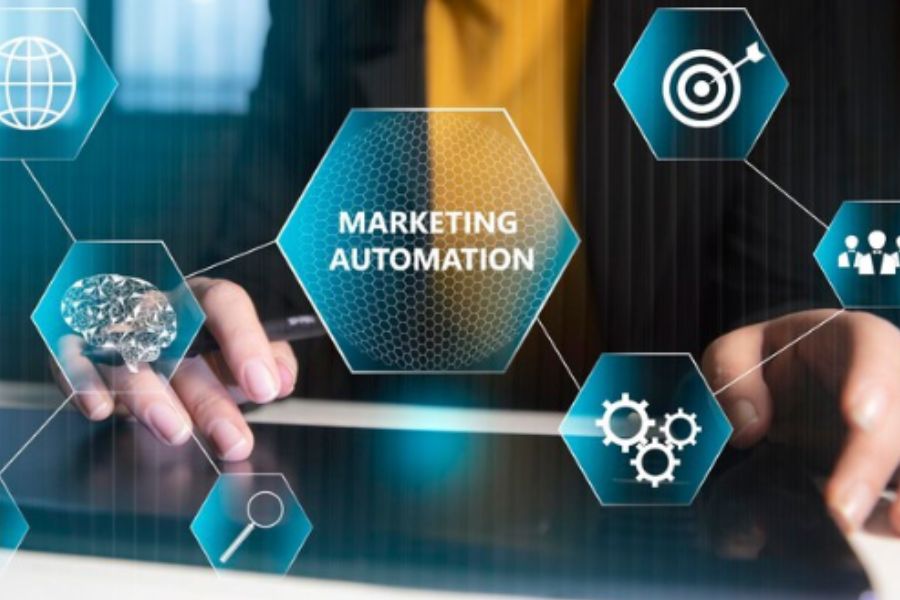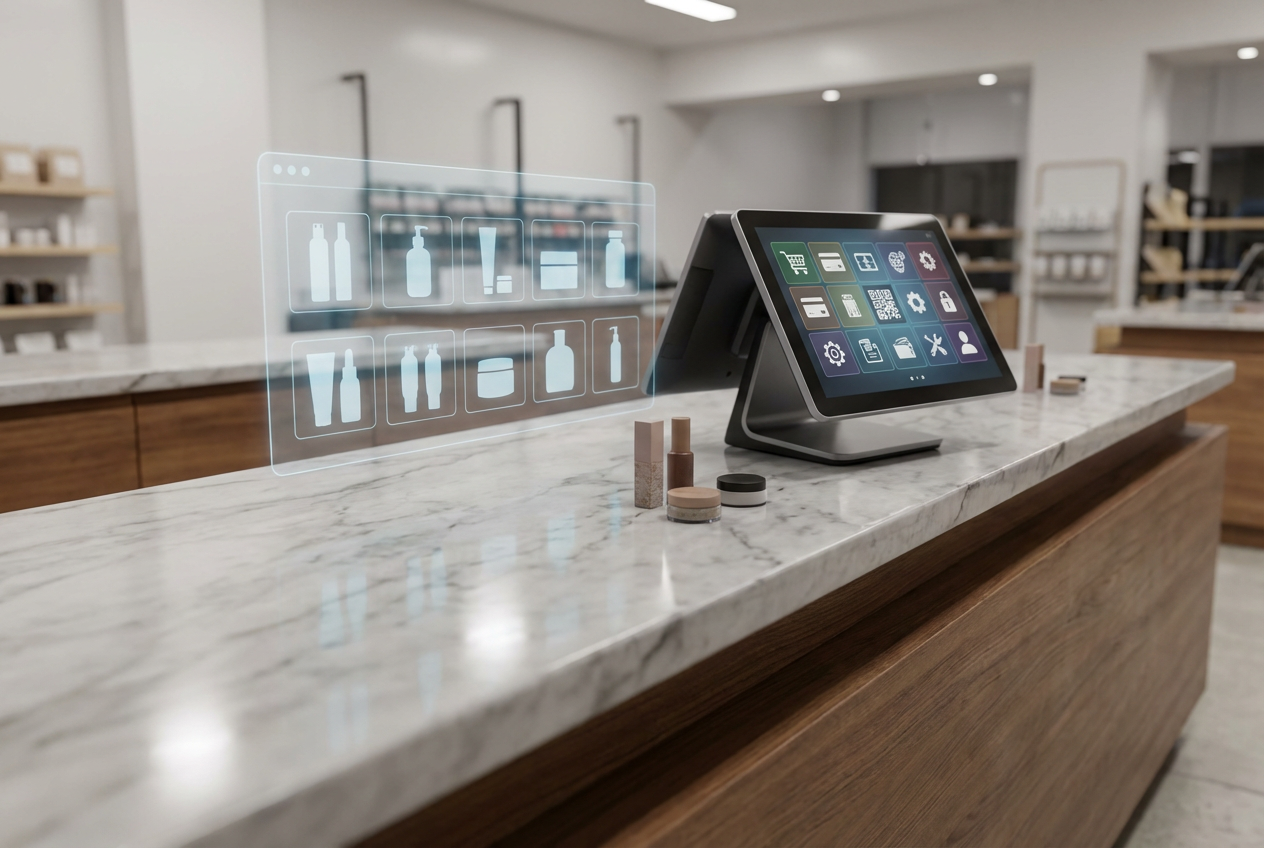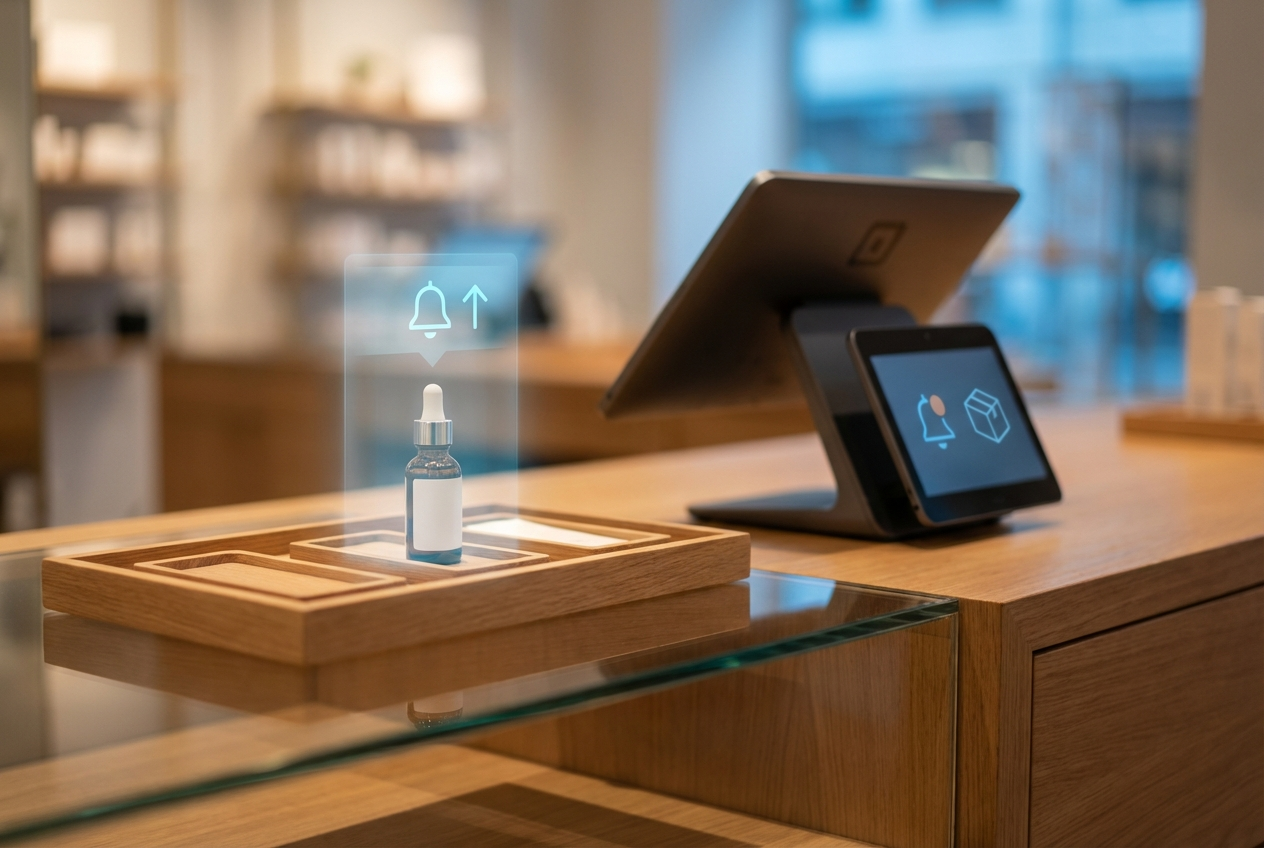Curious how retailers turn browsers into loyal buyers, but without sending a thousand emails by hand? A smart marketing automation strategy changes everything. This ConnectPOS guide breaks down what works, where most brands trip up, and why having the right tools makes your campaigns feel less like spam. It turns more shoppers into ‘shop here again soon.’
Highlights
- A marketing automation strategy is a structured plan that uses software to deliver timely, relevant messages without pulling your team away from other priorities.
- Successful strategies start with clear objectives, follow the customer journey, automate routine tasks, use retail-friendly tools, and rely on regular testing.
- Retailers can drive better results using flows like abandoned cart emails, welcome series, tailored product suggestions, and timely purchase reminders.
What is a Marketing Automation Strategy?
A marketing automation strategy is a plan that uses software to send the right message to the right person. No one needs their team to lose focus or time. The goal is clear: run campaigns on autopilot while keeping them feeling personal.
Global e-commerce sales are projected to reach $6.3 trillion by 2024. This shows just how many potential shoppers those automated messages now have to reach.
Retailers utilize marketing automation strategies to welcome new customers, recover abandoned carts, recommend products, and stay informed about repeat buyers. It’s not about replacing humans. It’s about letting automation handle the repetitive stuff, so teams can focus on ‘the big moves.’
Why does it matter for retail? The answer is simple. Shoppers get bombarded by messages all day. Only the most relevant ones land a sale. Good automation means personalized offers, fast follow-ups, and a customer experience that doesn’t feel ‘robotic.’
McKinsey reports that 71% of consumers now expect personalized interactions, and brands that deliver see revenue lifts of 10-15%.
Key goals for any strategy include:
- Personalization that actually connects, not just “Hi [First Name]”
- Scaling campaigns so small teams can punch above their weight
- Saving time on every routine campaign
- Lifting ROI by spending less but selling more
Core Building Blocks of a Successful Marketing Automation Strategy
No brand wakes up with a working marketing automation strategy. The winners start with the basics and build from there.
- Set Clear Goals and KPIs: Know what matters. Do you want more repeat buyers or fewer abandoned carts? Map out what counts and keep it simple.
- Identify and Segment Your Audience: Shoppers aren’t all the same. Use your POS or eCommerce tools to group customers by location, order history, size, or spend.
- Map the Customer Journey: Review every touchpoint: store, web, app. Which steps frustrate your customers? Where do they drop off? Mark these for automation.
- Automate Repetitive Tasks: Set up welcome emails, cart reminders, back-in-stock alerts, and re-engagement campaigns. ConnectPOS lets you sync sales data and push these triggers straight into tools like Klaviyo or Mailchimp.
- Choose the Right Tools for Retail: Pick solutions that work with your POS, eCommerce, and CRM. If you’re on ConnectPOS, make sure your automation tools grab all sales and customer updates instantly. Enterprises juggle an average of 175 separate SaaS apps, so tight integrations are critical to keep data clean and avoid “tool sprawl.
- Keep Testing and Improving: Run A/B tests, track what’s working, and adjust fast. Winning brands always measure, tweak, and keep their ‘best sellers’ on top.
Common Challenges Retailers Face With Marketing Automation
It’s easy to hit send on a new campaign. It’s harder to make it work for real people.
- Misalignment Between Sales and Marketing: Teams often run in different directions. One team sends out sales while another sends a newsletter about out-of-stock products. Not a great look.
- Data Quality and Integration: Half-baked data gives you bad lists and awkward emails. POS, CRM, and eCommerce tools that don’t sync create gaps.
- Lack of Personalization: Bulk emails with no context end up in spam. Generic offers don’t turn heads. Without true segmentation, ‘personalization’ falls flat.
- Over-Automation and Impersonal Messaging: Automating too much leads to tone-deaf campaigns. No one wants to feel like just another order number.
- Measuring ROI and Effectiveness: Lots of brands can’t tie campaigns to real results. If you can’t see what’s working, you can’t fix what’s broken.
- Consistent Brand Presence: Switching between channels, like email, SMS, or store, can water down your message. Brands lose their voice when systems don’t talk.
Most Efficient Marketing Automation Strategies for Retail
Every retail business needs more than just a good idea. Winning strategies put the right message in front of the right shopper at the perfect time. We’ll show you how brands make automation work for their bottom line.
►►► Optimal solution set for businesses: Multi store POS, Next-gen POS, Inventory Management Software (MSI), Self Service, Automation, Backorders
- Abandoned Cart Automation
Don’t let carts go cold. Send tailored emails or SMS nudging shoppers to complete their orders. Mix in time-sensitive deals or gentle ‘don’t miss out’ reminders. ConnectPOS, for example, syncs these events in real time with Mailchimp and Klaviyo, so your follow-up lands before shoppers forget.
- Welcome Series for New Customers
New shoppers need a quick tour. Automated welcome sequences introduce your brand, show off best-sellers, and sometimes include a first-purchase offer. These flows make shoppers feel valued and encourage them to proceed to checkout.
- Personalized Product Recommendations
Use purchase and browsing data to highlight new arrivals or restock alerts. Real product suggestions, not ‘random picks’, keep engagement high. ConnectPOS helps collect and sync these preferences for smarter campaigns.
- Replenishment & Repeat Purchase Reminders
Some things run out: beauty, groceries, pet supplies. Smart automation tools send reminders based on average reorder time. Timed right, these emails catch shoppers just when they need a top-up.
- VIP Loyalty and Segmentation
Spot your top customers early. Send exclusive discounts, early access to new lines, or personalized birthday rewards. A tight marketing automation strategy treats VIPs like insiders, not just high spenders.
If your store offers a loyalty program POS, automation can make sure rewards are triggered exactly when they matter.
- Omnichannel Campaigns
No more guessing where customers hang out. Coordinate email, SMS, push notifications, and in-store signage. ConnectPOS syncs cart status and customer tags, so your message lands on the right channel, every time.
Mobile now accounts for 60% of all e-commerce transactions, worth roughly $2.2 trillion in 2023, so mobile-first automation rules cannot be skipped
- AI-Enhanced Timing & Personalization
Modern platforms now use machine learning to predict the best time to send and what to say. They test subject lines, offers, and timing for each segment. Smarter timing means higher open rates and less ‘unsubscribe’ drama.
How to Choose the Best Marketing Automation Platform for Your Retail Store?
Finding the right tool isn’t about price or popularity. It’s about what works for your store and team.
- Must-have integrations: POS, eCommerce, CRM, Report & Analytics tools
- Retail-focused tools: support for loyalty, multi-location, inventory sync
- True segmentation: easy to set up and update
- Clean dashboards: easy to track performance, see what works
- Fits your budget: free plans for small shops, enterprise plans for large chains
A great marketing automation strategy needs the right foundation. Don’t get stuck with systems that don’t ‘speak’ to each other. Bloomberg Intelligence projects that e-commerce will climb to 33% of all US retail by 2027, or roughly $2.55 trillion in annual sales, putting extra pressure on platforms to scale.
Real-World Results: How Top Retailers Succeed with Marketing Automation
Some numbers speak for themselves. We’ve seen what happens when retail brands get their marketing automation strategy right.
Dampfi in Switzerland turned repeat visits into a routine. After connecting loyalty and gift card systems across online and physical stores with ConnectPOS and Magento POS 2, they saw a 72% surge in repeat customers and a 25% jump in satisfaction. No rocket science, just syncing up the right tools.
Akatsuka Orchid Gardens in Hawaii modernized their loyalty setup and checkout flow using ConnectPOS and BigCommerce POS. Results? A 20% bump in sales, 30% faster checkouts, and a loyalty program that covers the greenhouse and mainland orders alike.
PayPorte, working across Nigeria, the UK, and the US, synced up promotions, pricing, and loyalty tools through ConnectPOS. This move brought a 44% increase in conversions, 53% user growth, and sliced service costs by a third.
Across the board, automation delivers. The numbers don’t lie:
- $36 average ROI for every $1 spent on email automation
- Triggered flows convert 14.5% better than batch emails
- Marketing teams using automation spend 12% less time on manual work. Global e-commerce is still expanding at over 8% annually, so those efficiency gains compound year after year
Turns out, efficiency isn’t just a nice-to-have. It’s a profit driver.
Next Steps to Build an Efficient Retail Marketing Automation Strategy
Getting started isn’t about launching everything at once. Start with the basics and build up.
- Audit your current marketing flows
- Pinpoint where automation makes the biggest difference
- Set up core automations: cart recovery, welcome series, replenishment reminders
- Test results, check numbers, and tweak what doesn’t stick
- Train your team and get sales and marketing talking
Each step pushes your marketing automation strategy forward. There’s no need to reinvent the wheel.
Meet ConnectPOS: The POS That Powers Smarter Retail Automation
ConnectPOS is a leading cloud-based POS solution built to help modern retailers unify online and offline sales while making automation effortless. Whether you’re running a boutique or scaling across markets, it gives you the tools to move faster and smarter.
With ConnectPOS, retail teams can automate everyday tasks that used to eat up hours, like syncing inventory, sending customer updates, and managing orders. No more double entry. No more missed chances to re-engage buyers.
Why retailers trust ConnectPOS for marketing automation:
- Real-time sync for inventory, orders, customers, and promotions across sales channels
- Built-in loyalty program tools and promotion engines for campaign automation
- Centralized customer profiles with purchase history and behavior tracking
- Automatic order synchronization with platforms like Magento, Shopify POS, and BigCommerce
- Offline POS functionality for uninterrupted service during network issues
- Custom pricing and promotions tailored to customer groups or loyalty tiers
- Omnichannel cart abandonment recovery via synced carts and CRM integrations
- In-store and online loyalty point syncing for consistent customer experiences
- Multiple outlet management to run campaigns across regions or store locations
- Compatibility with third-party CRM, ERP, and marketing tools for scalable automation setups
Marketing automation only works if your systems talk to each other. ConnectPOS ensures that transactions are processed live and without lag. It’s not just a POS. It’s your campaign assistant, inventory manager, and customer service tool all rolled into one.
FAQs: Marketing Automation Strategy for Retail
1. What’s the difference between email marketing and a full marketing automation strategy?
Email marketing is one piece. A true marketing automation strategy goes beyond, tying together emails, SMS, push, loyalty, and more. The best setups react to shopper behavior, not just send bulk messages.
2. How long does it take to see results?
Retailers often see early signs in a few weeks, especially with cart recovery and welcome flows. Bigger lifts come as you build out more automations.
3. Do small retailers need marketing automation?
Yes. Even a single-store shop can save time and make more sales by automating the basics. Start simple. Scale up as you grow.
4. What is the best way to measure success?
Track revenue from automated campaigns, conversion rates, repeat buyers, and engagement: opens, clicks, redemptions. Don’t just count emails sent.
Final Thoughts
Building an efficient marketing automation strategy isn’t just about sending more messages. It’s about making each campaign matter. Save time, lift ROI, and help teams work smarter, not harder.
The right platform gives you the freedom to focus on growth, not grunt work. ConnectPOS lets you sync data, automate key tasks, and keep shoppers coming back for more. Ready to try smarter automation? Contact us and see what a difference it makes.
►►► Optimal solution set for businesses: Shopify POS, Magento POS, BigCommerce POS, WooCommerce POS, NetSuite POS, E-Commerce POS



